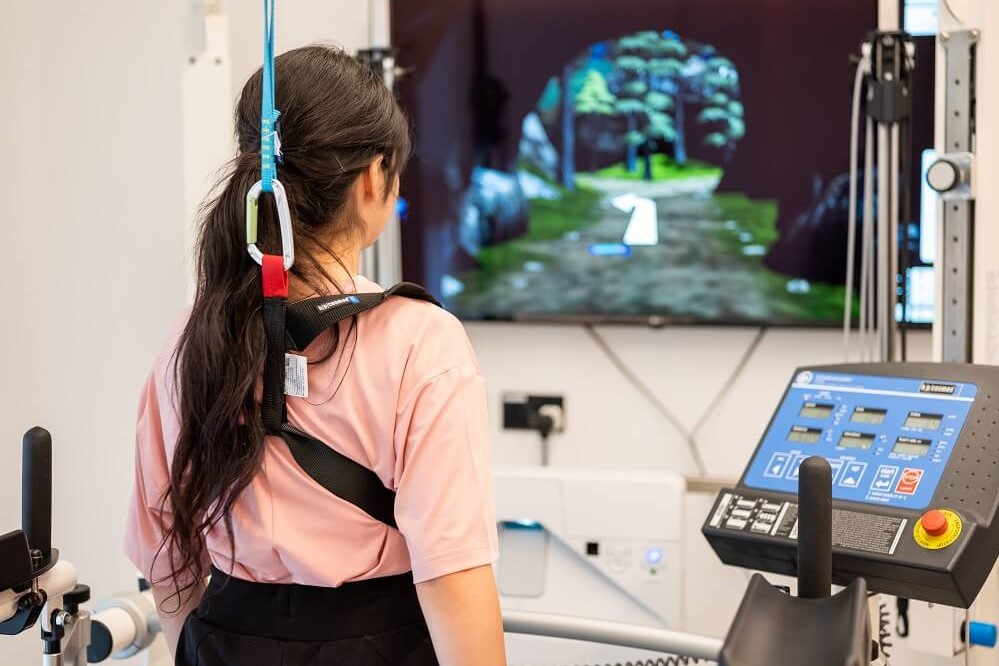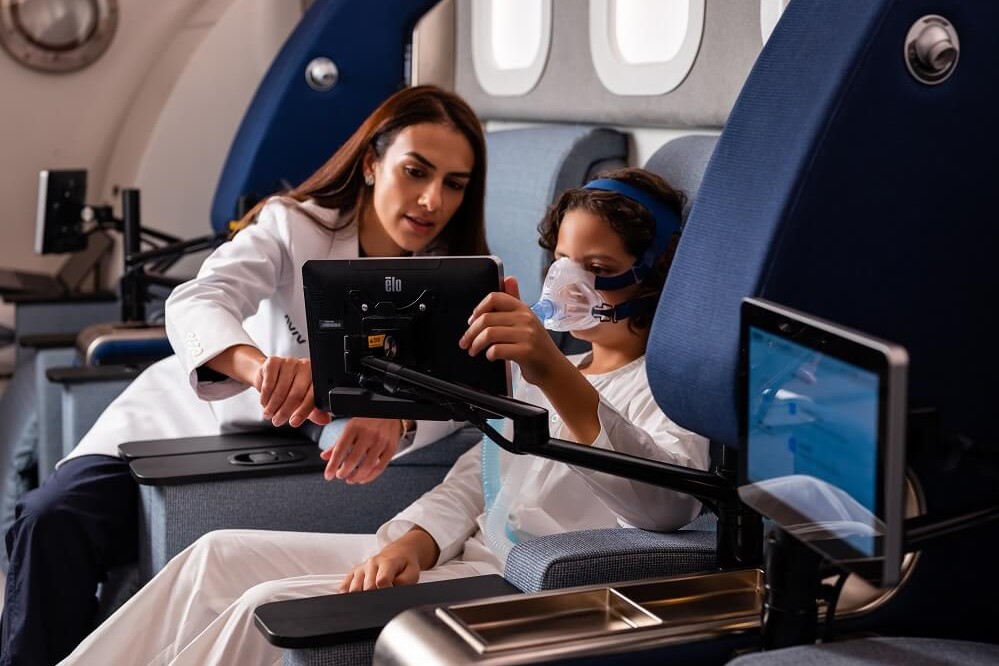
Understanding Stroke Symptoms, Causes and Treatment in Children & Youth


Stroke, often associated with older adults, can also occur in children. Childhood stroke is a significant medical event that requires awareness and understanding. In this comprehensive guide, we will address common questions about stroke in children.
What is a stroke?
A stroke occurs when there is a disruption of blood flow to the brain, leading to brain cell damage. It can be caused by either a blockage (ischemic stroke) or bleeding (haemorrhagic stroke).
Pediatric stroke is relatively rare, ranging from 1.2 to 13 cases per 100,000 children under 18 years of age. It can happen any time throughout childhood, and even before birth — this is known as perinatal stroke.
As stroke is often undiagnosed, cases may be higher than realised. Up to 66% of children who suffer from a stroke have persistent neurological disorders or learning and developmental problems, including trouble with muscle weakness, muscle tightness, swallowing, thinking, or talking.
What are the causes of stroke in children?
The causes of stroke in children differ from those in adults. Some common causes include:
- Congenital heart defects
- Blood clotting disorders
- Infections (such as meningitis)
- Traumatic brain injuries
- Vascular malformations in the brain

What are the signs and symptoms of stroke in children?
Recognizing the signs and symptoms of stroke in children is crucial for early intervention. Common symptoms include:
- Sudden weakness or numbness in the face, arm, or leg, usually on one side of the body
- Difficulty speaking or understanding speech
- Severe headache
- Trouble with coordination and balance
- Loss of vision or changes in vision
- Seizures
How is childhood stroke diagnosed?
Diagnosing childhood stroke involves a combination of medical history, physical examination, and diagnostic tests. Imaging techniques such as magnetic resonance imaging (MRI) or computed tomography (CT) scans help identify the presence of a stroke and its location in the brain.
Additional tests may be performed to determine the underlying cause. This includes genetic tests as well as tests for abnormalities in blood clotting, also known as a thrombophilia profile
Other diagnostic procedures may be performed on a case-by-case basis. These may include transcranial Doppler ultrasound, cerebral angiography, or specialised tests to evaluate specific blood vessels or regions of the brain.

What is a thrombophilia workup and why is it important in stroke diagnosis?
A thrombophilia workup is a specialised set of tests performed to assess the risk of blood clot formation, particularly in individuals who have experienced a stroke or other thrombotic events.
Thrombophilia refers to an increased tendency to form abnormal blood clots. In the context of stroke, identifying thrombophilia is important as it helps determine the underlying cause of the stroke and guides treatment decisions. The workup typically involves several tests to assess various factors that contribute to blood clotting. This includes but is not limited to, the following:
- Coagulation tests: These tests evaluate the blood’s clotting ability. They measure factors such as prothrombin time (PT), activated partial thromboplastin time (aPTT), and international normalised ratio (INR). These tests help assess the overall clotting function and identify any abnormalities that may increase the risk of stroke.
- Genetic tests: Genetic tests are performed to identify inherited conditions that can contribute to abnormal blood clotting. The most common genetic mutations associated with thrombophilia include Factor V Leiden mutation and prothrombin gene mutation. Detecting these mutations helps determine the risk of blood clots and guides treatment decisions.
- Antiphospholipid antibody tests: Antiphospholipid antibodies are autoantibodies that target certain proteins in the blood, leading to an increased risk of blood clots. Testing for these antibodies, including lupus anticoagulant, anticardiolipin antibodies, and anti-beta-2 glycoprotein I antibodies, helps identify antiphospholipid syndrome, an acquired thrombophilia condition.
- Protein C and S testing: Protein C and S are natural anticoagulant proteins that help regulate blood clotting. Testing for deficiencies or abnormalities in these proteins can help identify an increased risk of clot formation.
- Homocysteine levels: Elevated levels of homocysteine, an amino acid, can increase the risk of blood clots. Testing homocysteine levels can help assess the individual’s risk and guide preventive measures.
At Aviv Clinics Dubai by DP World, our team of experts is here to help, starting that process with our Youth Assessment. The assessment draws on years of evidence-based research by some of the world’s foremost medical professionals and scientists.
Our Youth Assessment offers an in-depth cognitive and physical assessment to evaluate the issue and offer further advice for a tailored treatment plan moving forward.

How is childhood stroke treated?
Treatment for childhood stroke depends on the type, cause, and severity of the stroke. Immediate medical attention is essential. Treatment options may include:
- Medications: Blood thinners or antiplatelet drugs may be prescribed to prevent further clot formation or manage underlying conditions.
- Rehabilitation: Physical, occupational, and speech therapy may be recommended to help the child regain lost functions and improve overall quality of life.
- Surgery: In some cases, surgical intervention may be necessary to correct underlying issues or prevent recurrent strokes.
What are the long-term effects of childhood stroke?
The long-term effects of childhood stroke vary depending on the location and severity of the stroke. Some children may experience physical disabilities, cognitive impairments, speech difficulties, or emotional challenges. Rehabilitation and ongoing support play a crucial role in helping children overcome these challenges.

How can we support children who have experienced a stroke?
Supporting children who have experienced a stroke involves a multidisciplinary approach. Here are some ways to provide support:
- Early intervention: Early access to medical care and rehabilitation services is crucial for optimal recovery and development.
- Therapies: Engage children in physical, occupational, and speech therapies tailored to their individual needs to promote recovery and enhance their abilities.
- Educational support: Collaborate with teachers and schools to create a supportive learning environment that accommodates the child’s specific needs.
- Emotional support: Provide emotional support to both the child and their family, as stroke can be a traumatic event. Access to counselling and support groups can be beneficial.
- Preventing stroke recurrence: medical and/or surgical treatments may be needed in certain children, with specific underlying conditions, to prevent the recurrence of stroke. This highlights the importance of a thorough diagnostic workup in the aftermath of a first stroke in children.

Can childhood stroke be prevented?
While some causes of childhood stroke cannot be prevented, certain steps can reduce the risk. These include:
- Managing underlying health conditions: Treating and managing conditions such as heart defects or blood clotting disorders can help minimize the risk of stroke.
- Vaccinations: Ensuring children receive recommended vaccinations can help prevent infections that can lead to stroke.
- Safety precautions: Promote safety measures to prevent traumatic injuries, such as using seat belts, childproofing the home, and wearing protective gear during sports activities.
What are the causes of recurrent strokes in Pediatrics?
Recurrent strokes in children can occur due to various factors. Here are some common causes of recurrent strokes in children:
- Underlying medical conditions: Certain medical conditions increase the risk of recurrent strokes in children. These conditions may include congenital heart defects, blood clotting disorders (such as thrombophilia or antiphospholipid syndrome), sickle cell disease, certain inborn errors of metabolism, vasculitis (inflammation of blood vessels), or moya-moya disease (a rare blood vessel disorder).
- Persisting risk factors: In some cases, underlying risk factors that contributed to the initial stroke may persist and increase the likelihood of subsequent strokes. These risk factors can include uncontrolled high blood pressure, poorly managed diabetes, genetic dyslipidaemias, or untreated infections.
- Medication non-compliance: In children who require long-term medication to manage conditions like thrombophilia or heart abnormalities, failure to adhere to the prescribed medication regimen can increase the risk of recurrent strokes. It is crucial for caregivers to ensure consistent medication adherence and follow-up with healthcare providers.
- Incomplete treatment of underlying cause: If the underlying cause of the initial stroke was not adequately treated or managed, it can lead to recurrent strokes. For example, if a child has a structural abnormality in the blood vessels of the brain, such as an arteriovenous malformation (AVM), and it was not addressed through surgery or other interventions, the risk of subsequent strokes remains.
- Cardiac embolism: Cardiac embolism refers to the formation of blood clots in the heart, which can then travel to the brain and cause a stroke. In some cases, children may have conditions that predispose them to cardiac embolism, such as abnormal heart valves, arrhythmias, or infections affecting the heart valves (endocarditis).
The World’s Most Advanced Hyperbaric Oxygen Therapy Program can help your child

Hyperbaric Oxygen Therapy (HBOT) is a common treatment for medical conditions associated with a lack of oxygen, and research shows that it can help with the healing of brain injuries.
At DP World’s Aviv Clinics Dubai, we first diagnose the severity of the brain injury with physical and neurological tests to assess suitability for HBOT treatment. We then advise on a HBOT treatment plan.
The Aviv Youth Medical Program combines two processes that help stroke survivors.
First, we increase the oxygen levels in the body, giving your brain an energy boost.
Then, we fluctuate the level of oxygen. This variation in oxygen supply triggers the body’s natural process of regeneration.
Watch Neal’s Remarkable Recovery Story
Want to learn more? Contact the clinic and speak to our care team to see if your child is eligible for the treatment.
Aviv Medical Program provides you with a unique opportunity to invest in your health while you age


